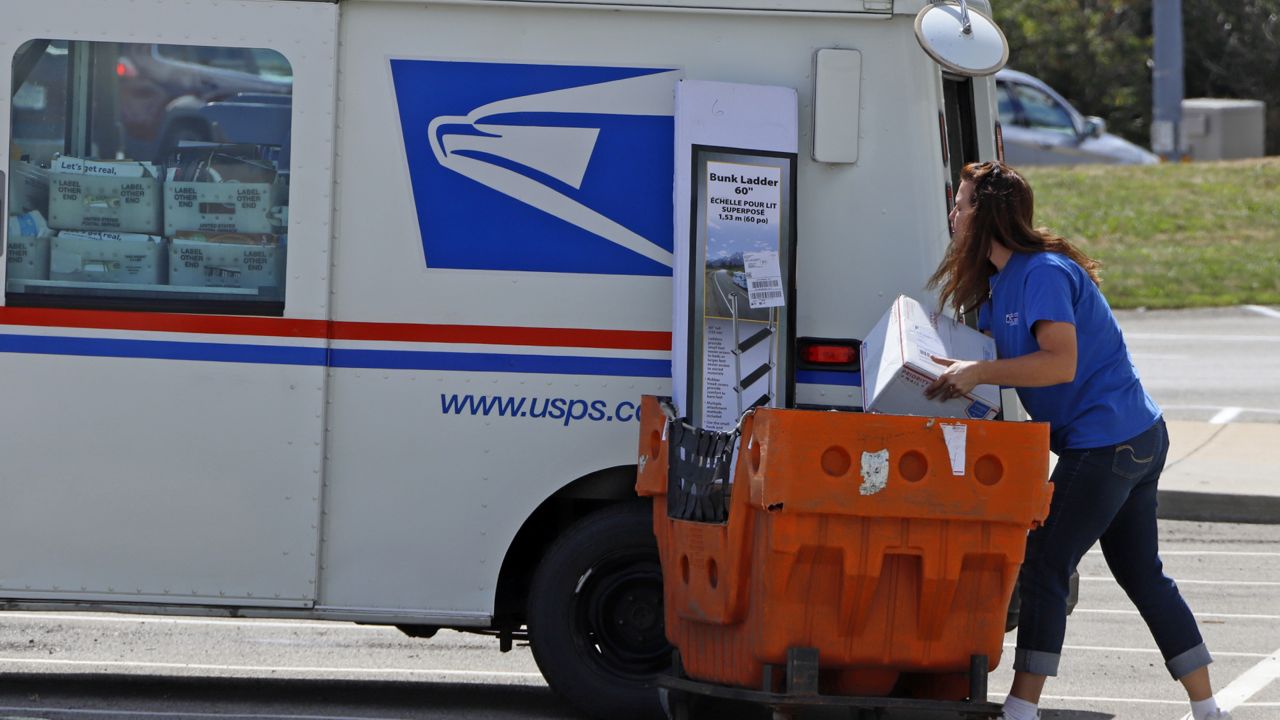The United States Postal Service on Thursday released its annual list of dog attack national rankings, saying over 5,800 postal workers were bitten by dogs while on the job in 2020.
That number remained relatively stable from the previous year, when 5,803 postal service workers were bitten by dogs; that’s 200 less than in 2018 and over 400 less than in 2017.
According to data from the Bureau of Labor Statistics, the USPS employed approximately 503,100 people in 2019, the most recently available year for which data is available. It’s unclear how many of those employees were letter carriers delivering mail.
Overall, the amount of postal service employees subjected to dog attacks amounts to around 1.15% of the total USPS workforce.
The highest number of dog attacks in a single city occurred in Houston, Texas, where 79 such incidents took place in 2020; Chicago came in second, with 59 dog attacks against postal workers.
The top five states where postal workers were attacked or bitten by dogs were California, with 782 incidents; Texas with 402; Ohio with 369; New York with 295 and Pennsylvania with 291.
The USPS says that even “one bite is one too many,” and is releasing the numbers alongside do’s and dont’s for dog owners as part of their annual National Dog Bite Awareness Week, which runs from June 12 through June 18.
“Raising awareness about dog bite prevention and how to protect our letter carriers as we deliver the mail is paramount,” USPS acting employee safety and health awareness manager Jamie Seavello wrote in a statement. “Dogs are instinctive animals that may act to protect their turf and that why’s (sic) it’s important to inform the public about this campaign.”
The USPS, the American Veterinary Medical Association and American Humane agree that the best way to prevent dog bites or attacks comes from proper dog training. According to American Humane, an animal welfare organization, the vast majority of dog bites are preventable .
Both groups advise pet owners to ensure their dogs are healthy, as pets are more likely to become aggressive if they are sick or in pain. Owners should also leash-train their dogs and slowly expose pets to new experiences in safe environments.
The USPS also asks pet owners to “recognize and promote responsible pet ownership,” in part by leash-training their pets, but also by either keeping dogs indoors or in a separate room when a mail carrier arrives.
Parents are also suggested to, “remind their children not to take mail directly from a letter carrier as the dog may view the carrier as a threat.”
Letter carriers do have tools and are trained to protect themselves against dog attacks, including a dog alert feature on their handheld scanner where they can be advised of potentially dangerous dogs at certain homes, and also use “dog warning cards as reminders when they sort their mail for their routes that a dog that may interfere with delivery,” per the USPS.
“When a carrier feels unsafe, mail service could be interrupted, not only for the dog owner, but for the entire neighborhood,” the agency says in part. “When mail service is interrupted, mail must be picked up at the Post Office. Service will not be restored until the dog is properly restrained.”
Just as dogs are more likely to become aggressive when they are in pain, canines are also creatures of habit, and can become stressed when such routines are disrupted.
An increase in dog bites nationwide began in March 2020 of last year, and experts attribute the spike to “the disruption in routines at the start of pandemic lockdowns, when dogs were dealing with owner stress and more people around the house throughout the day.”
As pandemic restrictions start to ease across the country, animal experts are urging pet owners to make a renewed focus on training techniques, interactions with unknown people, health checks and socializing with other dogs.



